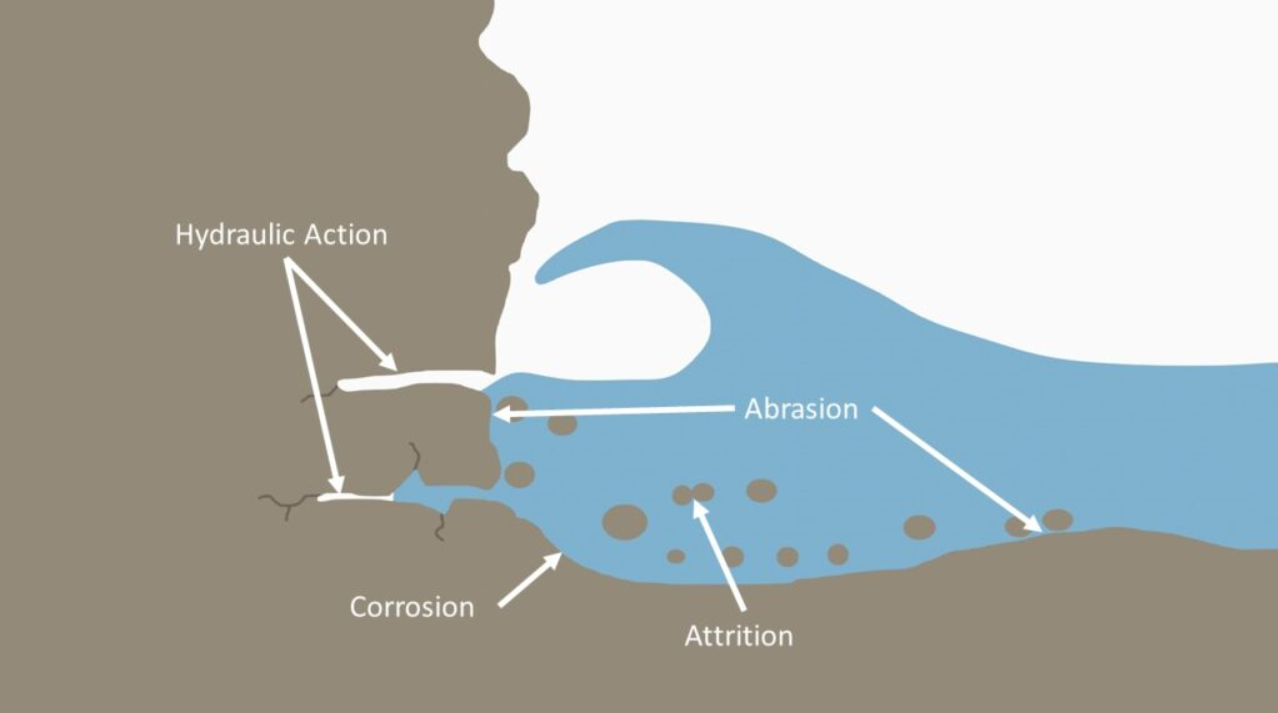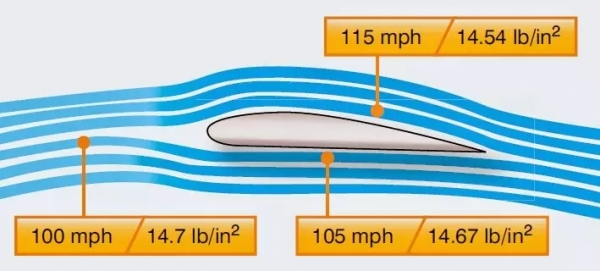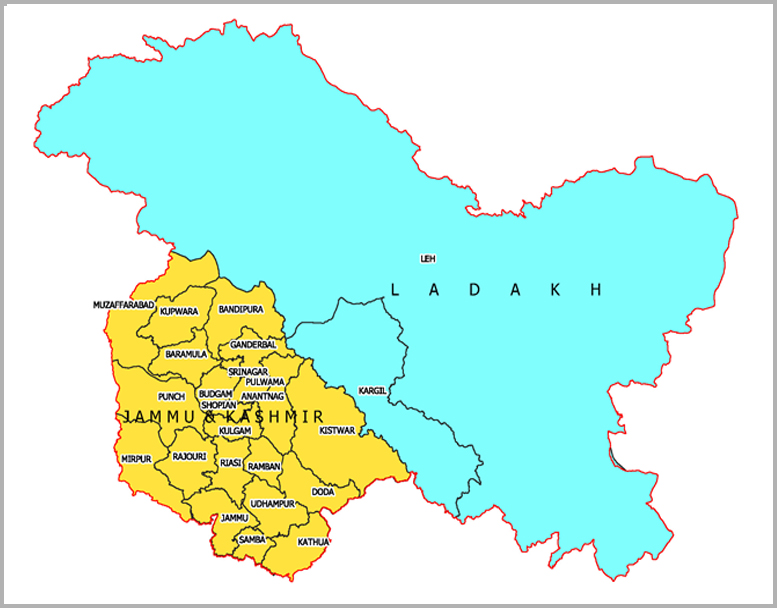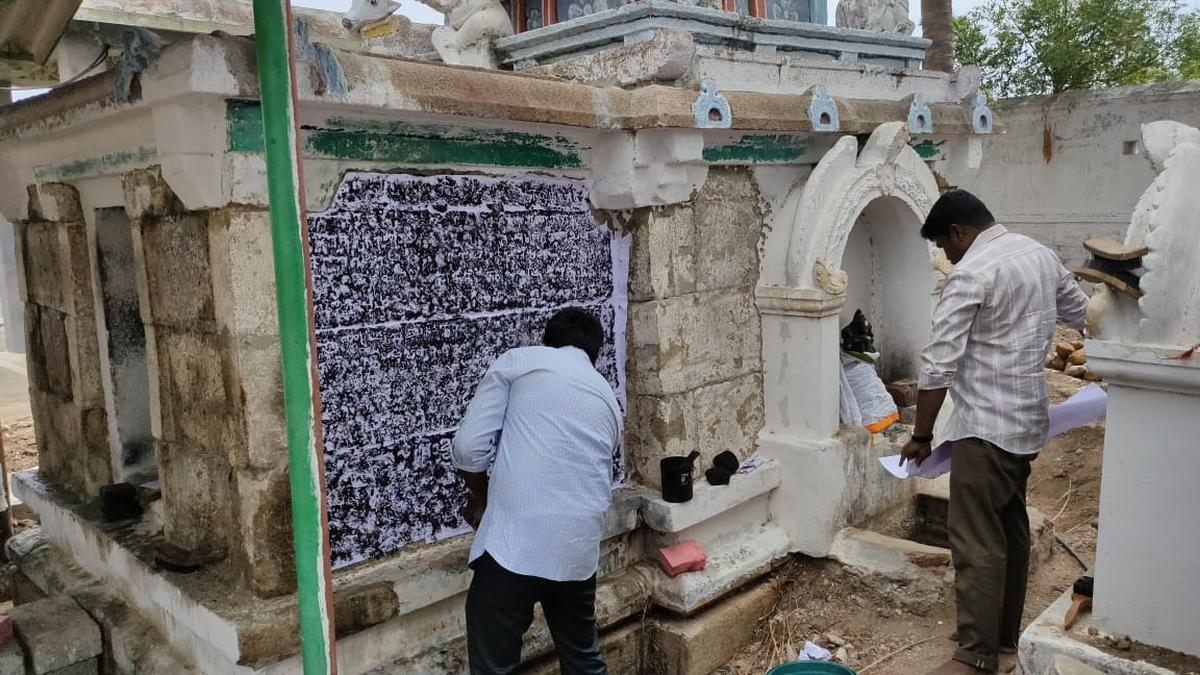Indian Polity
Right to Be Forgotten
For Prelims: Supreme Court of India, Right to be forgotten, Personal data, Right to privacy, Right to Information Act, 2005
For Mains: Right to be forgotten and government steps to protect privacy, Related Challenges, Data Privacy Rights
Why in News?
Recently, the Supreme Court of India has agreed to hear a case that could redefine the "right to be forgotten" in India, where no statutory framework currently exists.
- This right, also known in European privacy law as the "right to erasure," pertains to an individual's ability to remove their digital footprint from public view when it violates their privacy.
- The outcome is expected to significantly influence how this right is understood and implemented in the country.
What is the Right to Be Forgotten?
- Definition: The right to be forgotten allows individuals to request the removal of their personal data from digital platforms when it is outdated, irrelevant, or harmful to their privacy.
- European Context: Established by the Luxembourg-based Court of Justice of the European Union (CJEU) in 2014, the right to be forgotten was highlighted in the "Google Spain case" that required Google to remove 'inadequate, irrelevant, or no longer relevant' data upon request.
- The court ruled that search engines must address requests to remove information that is no longer relevant or excessive in light of time elapsed.
- In the EU, the right to be forgotten is enshrined in Article 17 of the General Data Protection Regulation (GDPR), which emphasises informational self-determination and the right to control personal data.
- Other Nations: Countries like Canada, the United Kingdom, Argentina, and Japan have adopted similar laws. In 2023, a Canadian court upheld the right to demand search blocks on personal data.
- California: The 2015 Online Eraser law allows minors to remove their posted information. The 2023 DELETE Act extends this right to adults, allowing them to delete personal information collected by data brokers.
How is the Right to Be Forgotten Interpreted in India?
- Current Status: India does not have a specific statutory framework for the right to be forgotten. However, the concept has been referenced in the context of privacy and digital rights.
- Judicial Recognition: The 2017 ruling in Justice K.S. Puttaswamy v. Union of India recognised the right to privacy as a fundamental right under the Constitution, which implicitly includes the right to be forgotten.
- In the Puttaswamy case, the Court acknowledged the right to be forgotten but clarified that it should not be absolute. It outlined scenarios where this right may not apply, such as for public interest, public health, archiving, research, or legal claims.
- Stated that the recognition of such a right would only mean that an individual should be able to remove their personal data when it is no longer relevant or serves no legitimate interest.
- Digital Personal Data Protection Act, 2023: This Act recognizes the right to “erasure” but the application of these laws to court records and publicly available data remains unclear, with conflicting interpretations in the courts.
- Information Technology Rules, 2021: Obligates intermediaries to remove or disable access to content violating privacy within 24 hours of a complaint.
What are the Judicial Precedents Related to the Right to Be Forgotten?
- Rajagopal vs. State of Tamil Nadu Case, 1994: This landmark case discussed the "right to be let alone" but distinguished it from the publication of public records, such as court decisions, which remain a legitimate subject for public comment.
- Dharamraj Bhanushankar Dave vs. State of Gujarat, 2017: The Gujarat High Court denied a request to remove details of an acquittal from public records, emphasising that court orders should remain accessible.
- Orissa HC (2020): The Orissa High Court, dealing with a criminal case involving “revenge porn,” emphasised the need for extensive debate on the right to be forgotten.
- The Court noted that the implementation of this right presents complex issues requiring clear legal boundaries and redressal mechanisms.
- Delhi HC (2021): Extended the right to be forgotten in a criminal case, allowing the removal of details from search results to protect the petitioner’s social life and career prospects.
- Supreme Court Order (July 2022): The Supreme Court directed its registry to create a mechanism for removing the personal details of a couple involved in a contentious marital dispute from search engines. This expanded the interpretation of the right to be forgotten.
- Kerala High Court (December 2023): Ruled that the right to be forgotten cannot be applied to ongoing court proceedings, citing concerns about open justice and public interest.
- The court suggested that legislative clarity is needed but acknowledged that the right could be considered depending on specific case details and time elapsed.
- Himachal Pradesh High Court (July 2024): Directed the redaction of names of both the accused and the victim in a rape case, highlighting that once acquitted, an individual should not continue to carry the stigma of the accusations.
What Challenges arise from Inconsistent Judicial Approaches?
- Lack of Uniformity: The varied rulings by different High Courts create confusion about the application of the right to be forgotten, leading to inconsistent enforcement and potential legal uncertainty.
- Balancing Privacy and Public Interest: Courts struggle to balance individual privacy rights with the principle of open justice and public access to information, making it difficult to establish clear guidelines.
- Impact on Public Records: The distinction between personal privacy and public records, as discussed in Rajagopal vs. State of Tamil Nadu, 1994, poses challenges.
- Courts must navigate how to protect personal privacy without undermining the accessibility and legitimacy of public court records.
- Need for Legislative Clarity: The absence of a comprehensive legal framework contributes to the inconsistent application of the right, highlighting the need for legislative intervention to define clear standards and procedures.
- Potential for Overreach: Courts’ differing approaches may prompt concerns about overreach and the integrity of digital records.
- There is a risk that private entities might face undue pressure to remove content, potentially affecting the accuracy and completeness of online information.
- Balancing Rights: Courts need to balance the Right to Be Forgotten with freedom of speech and expression. Additionally, there is a need for clear guidelines to resolve conflicts between Right to Be Forgotten and the Right to Information Act, 2005.
- Other Challenges: Enforcing the Right to Be Forgotten across digital platforms and jurisdictions is challenging due to compliance issues and technical constraints like data replication.
- Ensuring compliance from search engines, websites, and other intermediaries requires robust legal and technical mechanisms. Complete removal of information from the internet can be technically difficult.
- Restriction to Journalism: It could restrict journalists from disclosing certain people's histories and past activities which could hinder journalists' ability to impart information and ideas freely through media, affecting the democratic role of journalism.
Why 'Right to Be Forgotten' Should Be Adopted?
- Control Over Personal Information: Individuals should have the right to control their personal information and identity in the digital age.
- Governments and private entities can significantly interfere with privacy by tracking and recording online activities.
- Many instances of personal information, such as intimate photos or private details, are shared online without consent.
- The 'Right to Be Forgotten' addresses this issue by allowing individuals to remove such content from public access.
- Mitigating Digital Damage: The presence of outdated or incorrect information canhave long-lasting negative effects on an individual's life, including their personal relationships and professional opportunities. This right helps mitigate such harms by allowing for the removal of outdated or irrelevant data.
- Individuals should not be continually penalised for their past, especially when they have moved on or changed. The right ensures they are not unjustly judged based on outdated information.
- Right to Privacy: There is no right to access private information that is unlawfully made public.
- Right to Be Forgotten ensures that individuals are not compelled to live with the repercussions of unlawfully disclosed personal information.
Way Forward
- Legislative Framework: Enact a comprehensive data protection law with 'right to be forgotten', define clear criteria for data erasure, and establish an independent data protection authority.
- This body would possess expertise in privacy, technology, and law, ensuring consistent and impartial decisions.
- Overreach: Prevent misuse of the 'right to be forgotten' through clear definitions, limitations, and oversight mechanisms.
- Develop clear judicial guidelines for balancing privacy and public interest in 'right to be forgotten' cases, considering factors such as the nature of the information, public interest, and time elapsed since publication.
- Industry Self-Regulation: Encourage industry self-regulation to develop responsible data handling practices. Promote data minimisation and secure data deletion procedures.
- Invest in research and development to address technical challenges related to data deletion and anonymization.
- Public Awareness: Conduct public awareness campaigns to educate individuals about data privacy rights and responsibilities. Foster a culture of responsible online behaviour.
Conclusion
The "Right to Be Forgotten" is gaining importance in legal and technical domains, reflecting its growing role in privacy protections. In India, the lack of specific legislation means this right is currently addressed through judiciary, but future legislation is anticipated to provide a clearer framework with the ongoing efforts to recognize this right.
|
Drishti Mains Question: Q. Analyze how the Supreme Court of India and various High Courts have interpreted the 'Right to Be Forgotten.' What are the implications of these interpretations for privacy rights in India? |
UPSC Civil Services Examination, Previous Year Questions (PYQs)
Prelims
Q1. ‘Right to Privacy’ is protected under which Article of the Constitution of India? (2021)
(a) Article 15
(b) Article 19
(c) Article 21
(d) Article 29
Ans: (c)
Q2. Right to Privacy is protected as an intrinsic part of Right to Life and Personal Liberty. Which of the following in the Constitution of India correctly and appropriately imply the above statement? (2018)
(a) Article 14 and the provisions under the 42nd Amendment to the Constitution.
(b) Article 17 and the Directive Principles of State Policy in Part IV.
(c) Article 21 and the freedoms guaranteed in Part III.
(d) Article 24 and the provisions under the 44th Amendment to the Constitution.
Ans: (c)
Mains
Q.1 Examine the scope of Fundamental Rights in the light of the latest judgement of the Supreme Court on Right to Privacy. (2017)


Biodiversity & Environment
Increase in Coastal Erosion
For Prelims: Coastal Erosion, Climate Change, Kattupalli Port, Sundarbans, Andaman and Nicobar Islands, Salinization, Groynes, Wetlands, National Centre for Coastal Research (NCCR), Coastal Regulation Zone (CRZ) Notification 2019, No Development Zones (NDZ), Coastal Zone Management Plans (CZMP), National Green Tribunal (NGT), National Strategy for Coastal Protection, Coastal Management Information System (CMIS)
For Mains: Causes and Impacts of Coastal Erosion in Littoral States and UTs.
Why in News?
A recent study revealed that coastal erosion is threatening the livelihood of fishers and other inhabitants in coastal Tamil Nadu.
- Nearly 43% of its coast faces erosion with a loss of more than 4,450 acres of land.
- Area under erosion is increasing by 3 metres per year on the east coast and 2.5 metres per year on the west coast.
- Development projects meant to boost economic growth and prevent sea erosion are making things worse by changing the shoreline.
What are the Key Findings of the Study Regarding Tamil Nadu Coast?
- In Tamil Nadu, for most of the year (about eight months), the wind and sea currents move from south to north, carrying sand with them. During the northeast monsoon (about four months), they flow in the opposite direction.
- When structures like ports, breakwaters or groynes are built extending into the sea, they block the natural movement of sand.
- This causes sand to pile up on one side and leads to erosion on the other side, where sand is lost.
- This imbalance speeds up coastal erosion, causing waves to move further inland and increasing the risk to coastal areas.
What is Coastal Erosion?
- About: Coastal erosion occurs when the sea wears away the land, often caused by strong waves breaking down the coast.
- It is the process by which local sea level rise, strong wave action, and coastal flooding wear down or carry away rocks, soils, and/or sands along the coast.
- Process: There are four main processes of coastal erosion. These are corrasion, abrasion, hydraulic action and attrition.
- Corrasion: It happens when strong waves throw beach material like pebbles at the base of a cliff, gradually breaking it down and creating a wave-cut notch (small, curved indent at the base of a cliff).
- Abrasion: It happens when waves, carrying sand and larger fragments, wear away the base of a cliff or headland. It's like a sandpaper effect and is especially common during powerful storms.
- Hydraulic Action: It occurs when waves hit a cliff, compressing air in cracks and joints. When the wave pulls back, the trapped air rushes out explosively, causing chunks of the cliff to break off. Weathering weakens the cliff further, making this process more effective.
- Attrition: It occurs when waves cause rocks and pebbles to bump into each other and break up.
- Causes:
- Waves: Powerful waves can erode coastlines through abrasion, corrasion, and hydraulic action. E.g. the cliffs of Dover in England are being eroded by the constant action of the English Channel's waves.
- Tides: High and low tides can affect the amount of erosion, particularly in areas with significant tidal ranges. E.g., the Bay of Fundy in Canada experiences extreme tides that can erode coastlines significantly.
- Wind and Sea Currents: It can cause gradual and long-term erosion. E.g., On the Tamil Nadu coast, for most of the year (eight months), wind and sea currents move from south to north, carrying sand along the coast. During the northeast monsoon (four months), this direction reverses.
- Hard Structures: Ports, breakwaters, and groynes interfere with the natural movement of sand, causing erosion on the down-current side and sand accumulation on the up-current side.
- Groynes are low-lying wood or concrete structures designed to trap sediment and dissipate wave energy.
- Development Projects: Infrastructure projects aimed at boosting economic growth are exacerbating erosion by altering the shoreline. E.g., Land reclamation in places like Mumbai causes erosion in nearby coastal regions.
- Port Expansion: When ports and harbours are expanded, structures like breakwaters and jetties block the natural movement of sand and sediment along the coast. This can lead to sediment accumulation on one side of the structure and increased erosion on the other side. E.g., Ennore Port and the Adani Kattupalli Port in Tamil Nadu.
Coastline of India
- India has a coastline of 7516.6 Km [6100 km of mainland+1197 km of islands] touching 13 States and Union Territories (UTs).
- Gujarat (1214.7 km) has the longest Coastline among states followed by Andhra Pradesh (973.7 km) and Tamil Nadu (906.9 km).
- Andaman & Nicobar Islands (1962 km) have the longest Coastline among UTs.
- Coromandel coast (Tamil Nadu) is a coast of emergence while Konkan coast (Maharashtra and Goa Coast) is a coast of submergence.
What are the Impacts of Coastal Erosion?
- Loss of Land: Erosion can lead to the loss of valuable coastal land, affecting property and infrastructure. E.g. the loss of land along the Marina Beach area in Chennai severely affected property and public spaces.
- Impact on Coastal Ecosystems: Erosion can destroy habitats such as mangroves, salt marshes and sand dunes, which are crucial for various species. E.g., In the Sundarbans region of West Bengal, erosion has led to the loss of mangrove forests.
- Flooding Risk: Erosion can reduce the natural barriers that protect coastal areas from flooding. E.g., In coastal regions of Kerala, erosion has increased the risk of flooding, affecting low-lying areas and exacerbating the impacts of heavy rains and storms.
- Displacement of Communities: Erosion can force communities to relocate, leading to social and economic disruption. E.g., coastal erosion in the Andaman and Nicobar Islands has led to the displacement of local communities, particularly on smaller islands where land loss is more pronounced.
- Salt Water Intrusion: Coastal erosion can lead to the salinisation of agricultural land, reducing crop yields.
- Eg., In Andhra Pradesh, saltwater intrusion negatively affected crop yields and reduced the productivity of farmland.
- Impact on Marine and Coastal Biodiversity: It can alter ecosystems and food chains. E.g., It hampered the health of marine ecosystems in the Lakshadweep Islands.
How to Prevent Coastal Erosion?
- Vegetation: Strategic planting of seagrass and other coastal plants helps prevent erosion. The roots of these plants help anchor the sand and ensure that it is not washed off in erosion.
- Beach Nourishment: Nature-based or "green infrastructure" protection measures enhance the natural ability of shorelines to absorb and dissipate storm energy without interfering with natural coastal processes.
- E.g., planting mangroves to serve as a buffer against erosion.
- Coastal Restoration: It is aimed at restoring habitats such as wetlands to benefit marine and coastal species by providing important nursery grounds. It has environmental benefits like carbon sequestration and restoration of open spaces.
- Regulatory Measures: Zoning laws, building codes, and maintaining minimum distance from the shoreline for new buildings or infrastructure facilities to regulate coastal development.
What Initiatives has the Government Taken to Tackle Coastal Erosion?
- Shoreline Mapping System: The National Centre for Coastal Research (NCCR) has observed that 33.6% of the Indian coastline was vulnerable to erosion, 26.9% was under accretion (growing) and 39.6% was in a stable state.
- Hazard Line: The Ministry of Environment, Forest & Climate Change (MoEFCC) has defined the hazard line to indicate shoreline changes and sea level rise.
- It is used for disaster management, adaptive planning, and mitigation measures in Coastal States/UTs.
- Coastal Regulation Zone (CRZ) Notification 2019: It permits erosion control measures and establishes No Development Zones (NDZ) to protect the coastline from encroachment and erosion.
- Coastal Zone Management Plans (CZMP): Following a National Green Tribunal (NGT) order, States/UTs have been asked to finalise CZMPs, including mapping of erosion-prone areas and preparing Shoreline Management Plans.
- National Strategy for Coastal Protection: MoEFCC has developed a national strategy and guidelines for coastal protection for all Coastal States and UTs.
- Flood Management Scheme: Anti-sea erosion schemes are planned and executed by State Governments with Union Government assistance in technical, advisory, catalytic, and promotional capacities.
- Coastal Management Information System (CMIS): It collects nearshore coastal data for planning, designing, and maintaining coastal protection structures. An experimental CMIS was set up at three sites each in Kerala, Tamil Nadu, and Puducherry.
Conclusion
Coastal erosion threatens India's coastlines, harming the environment and local communities. Natural and human factors worsen shoreline changes, leading to habitat loss and affecting fishermen. Improved shoreline mapping and government measures, like hazard lines and CRZ Notification 2019, aim to manage and protect coastlines. Ongoing efforts, such as CMIS, seek to enhance these strategies.
|
Drishti Mains Question: Q. Discuss how climate change and rising sea levels are posing threats to India’s coastal ecosystem. |
UPSC Civil Services Examination, Previous Year Questions (PYQs)
Mains
Q. Coastal sand mining, whether legal or illegal, poses one of the biggest threats to our environment. Analyse the impact of sand mining along the Indian coasts, citing specific examples. (2019)
Q. Discuss the causes of the depletion of mangroves and explain their importance in maintaining coastal ecology. (2019)


Science & Technology
High Temperature Impacting Flight Operations
For Prelims: Global Warming, Aviation Basics, Flight Operations.
For Mains: Impact of Global Warming on Aviation Industry, Causes, Impact of Plane Crashes, Implications and Way Forward.
Why in News?
Recently, several air operators cancelled their flights to Leh citing high temperature in the region that led to runway restrictions.
- The mountainous region has seen a rise in temperatures due to climate change in India's cold desert.
What is the Impact of High Temperatures on Aircraft Operation?
- Reduced Lift: Less dense air provides diminished support for aircraft wings, necessitating higher speeds and longer runways for takeoff. The lift-to-drag ratio is adversely affected, impacting overall aircraft efficiency.
- Engine Performance Deterioration: The combustion process within aircraft engines is compromised due to the decreased oxygen content in thinner air. This results in reduced engine thrust, further exacerbating takeoff challenges.
- Extended Landing Distances: The reduced effectiveness of reverse thrust in less dense air prolongs the landing process, requiring greater runway length for deceleration.
- A 2023 study revealed that global warming is expected to increase the take-off distance for Boeing 737-800 aircraft by an average of 6% during the period of 2071-2080, compared to 1991-2000.
- This change is particularly significant at low-altitude airports, necessitating an additional 113-222 meters for take-offs in future summers.
- A 2023 study revealed that global warming is expected to increase the take-off distance for Boeing 737-800 aircraft by an average of 6% during the period of 2071-2080, compared to 1991-2000.
- Operational Constraints: Airports situated at higher altitudes, where air density is naturally lower, are particularly vulnerable to temperature-induced flight restrictions. During periods of extreme heat, takeoff weight limits may be imposed, and flight operations could be suspended altogether.
Note
- The global average temperature has risen by at least 1.1 degrees Celsius since 1880, with India experiencing an increase of approximately 0.7 degrees Celsius compared to 1900 levels.
What is the Principle of Aircraft Flight Operation?
- All flying objects that use wings require air, as moving air generates a lifting force essential for maintaining the flight of kites, airplanes, and balloons.
- An aircraft experiences 4 basic forces:
- Lift: The upward force acting on the aircraft which helps the airplane to fly.
- Drag: The backward force caused by the resistance of air flow.
- Thrust: The forward force produced by the engines of the aircraft
- Weight: The body and cargo weight of the aircraft acting in a downward direction.
- An aircraft flies when the lift force generated by its wings overcomes its weight. To achieve this, the aircraft requires sufficient forward speed.
- The engines provide thrust to propel the aircraft forward. As the aircraft moves, the airfoil-shaped wings interact with the air, creating lift. This lift is generated due to a pressure difference between the upper and lower surfaces of the wing.
- The curved upper surface of the airfoil accelerates the air flowing over it, reducing the pressure according to Bernoulli's principle. Simultaneously, the air flowing under the wing is slightly compressed, increasing pressure. This pressure difference creates an upward force, lifting the aircraft.
- The angle of attack, the angle between the wing and the oncoming air, significantly influences lift. A small increase in angle of attack generates more lift, but excessive angles can lead to a stall.
- To maintain level flight, the lift force must equal the aircraft's weight. Pilots control lift by adjusting the wing's angle of attack and shape using control surfaces.
What are the Causes of High Temperature in Leh-Ladakh Region?
- Altitude: Leh-Ladakh's high elevation of approximately 3,000 metres causes thinner atmospheric density.
- Further the region's clear skies, minimal cloud cover, and sparse vegetation which increases solar radiation penetration and results in higher daytime temperatures during the summer.
- Topography: The Himalayas and Zanskar ranges create a rain shadow effect (form rain shadow desert) by blocking moisture-laden winds, resulting in minimal precipitation.
- This dry air enhances temperature fluctuations, causing higher daytime temperatures.
- Climate Change: Global warming has led to rising temperatures globally, affecting cold deserts as well. This phenomenon alters local weather patterns, potentially leading to warmer conditions in Leh-Ladakh.
- Human Activities: Urbanisation and infrastructure development in Leh and surrounding areas create localised warming effects, known as the urban heat island effect.
- "Urban heat islands" occur when cities replace natural land cover with dense concentrations of pavement, buildings, and other surfaces that absorb and retain heat, increasing energy costs, air pollution, and heat-related illness and mortality.
- Additionally, increased human activity, including tourism and military movement, contributes to rising temperatures.
|
Drishti Mains Question: What is Global warming and its implications on the aviation sector worldwide? |
UPSC Civil Services Examination, Previous Year Questions (PYQs)
Prelims:
Q. “Momentum for Change: Climate Neutral Now” is an initiative launched by (2018)
(a) The Intergovernmental Panel on Climate Change
(b) The UNEP Secretariat
(c) The UNFCCC Secretariat
(d) The World Meteorological Organisation
Ans: (c)
Mains:
Q. ‘Climate change’ is a global problem. How India will be affected by climate change? How Himalayan and coastal states of India will be affected by climate change? (2017)


Important Facts For Prelims
Quarrying Threatens Hampi
Why in News?
Recently, Hampi, a UNESCO World Heritage Site in the Vijayanagara district of Karnataka, has been experiencing stone quarrying activities in its vicinity.
- Environmentalists and tourists have raised alarms about the impact of these activities on the site’s historical and ecological integrity.
What are Key Facts About the Vijaynagar Empire and Hampi?
- Vijaynagar Empire:
- The Vijayanagar kingdom or “city of victory” was founded in 1336 by Harihara and Bukka, two brothers who had previously served in the army of Muhammad-bin-Tughlaq.
- They broke away from the Delhi Sultanate and established an independent state in Karnataka, with their capital city Vijayanagar located on the banks of the Tungabhadra river.
- The establishment of their kingdom was aided and inspired by the contemporary scholar and saint Vidyaranya.
- Vijayanagar Empire was ruled by four important dynasties named Sangama, Saluva, Tuluva, and Aravidu.
- Krishnadevaraya (1509-29) of the Tuluva dynasty was the most famous ruler of Vijayanagar.
- He composed a work on statecraft in Telugu known as the Amuktamalyada.
- Hampi:
- It is located in the Bellary District of Karnataka consisting of the remnants of the Vijayanagara Empire's capital city (14th-16th century CE).
- One of the unique features of the temples at Hampi is the wide chariot streets flanked by a row of pillared mandapas.
- Its famous places include the Krishna temple complex, Narasimha, Ganesa, Hemakuta group of temples, Achyutaraya temple complex, Vitthala temple complex, Pattabhirama temple complex, Lotus Mahal complex, etc.
- Hampi was declared a World Heritage Site by UNESCO in 1986.
- The Vijayanagara Empire was defeated by a coalition of Deccan sultanates in 1565 (Battle of Talikota), after which Hampi remained in ruins.
Vittala Temple:
- It was built in the 15th century during the rule of Devaraya II, one of the rulers of the Vijayanagara Empire.
- It is dedicated to Vittala (Lord Vishnu) and is also called Vijaya Vittala Temple.
- It features notable attractions such as a stone chariot and musical pillars, with the stone chariot being depicted on the Rs 50 currency note.
Hampi Chariot:
- It is among three famous stone chariots in India, the other two being in Konark (Odisha) and Mahabalipuram (Tamil Nadu).
- It was built in the 16th century by the orders of King Krishnadevaraya, a Vijayanagara ruler.
- It is a shrine dedicated to Garuda, the official vehicle of Lord Vishnu.
Virupaksha Temple:
- It is the 7th-century Shiva temple in Hampi, Central Karnataka.
- Lord Virupaksha, also referred to as Pampapathi is the main deity in Virupaksha Temple.
- It was built in the Vijayanagara style of architecture and was built by Lakhan Dandesha, a nayaka under the ruler Deva Raya II of the Vijayanagara Empire.
Vijayanagara School of Temple Architecture
- Diverse Structures: It encompassed temples, monolithic sculptures, palaces, official buildings, cities, irrigation systems, step wells, and tanks.
- Blend of Styles: The architecture uniquely integrated Hindu and Islamic elements.
- The features of the temples were:
- The walls of the temples were highly decorated with carvings and geometrical patterns.
- Goupurams were now built on all sides.
- Monolithic rock pillars
- Generally, temple pillars have a mythical creature Yali (Horse) engraved in them
- More than one mandaps were built in each temple. The central mandap came to be known as the Kalyan mandap.
- The concept of secular buildings inside the temple premises was also introduced during this period.
- Notable structures include Mahanavami Tibba, Kalyana Mandapas, and Hazara Ram Temple. Decorative elements often featured horses and Raya Gopurams (grand gateway towers).
UPSC Civil Services Examination, Previous Year Questions (PYQs)
Q1. Which one of the following statements is correct? (2021)
(a) Ajanta Caves lie in the gorge of Waghora river.
(b) Sanchi Stupa lies in the gorge of Chambal river.
(c) Pandu-lena Cave Shrines lie in the gorge of Narmada river.
(d) Amaravati Stupa lies in the gorge of Godavari river.
Ans: (a)


Important Facts For Prelims
Porja, Bagata, and Konda Dora Tribes
Why in News?
The plight of tribal communities in Andhra Pradesh, who played a crucial role in constructing the Lower Sileru Hydro-Electric Project (LSP), has recently gained attention.
- Despite their crucial contributions in the 1970s, villages nearby Visakhapatnam settled by the Porja, Bagata, and Konda Dora tribes continue to face severe shortages of electricity and clean water.
What are the Key Facts About the Porja, Bagata, and Konda Dora tribes?
- Porja Tribe:
- The Porja tribe (sub-groups: Bondo Porja, Khond Porja and Parangi Porja), residing in the Visakhapatnam area of Andhra Pradesh, has a population of approximately 16,479 (Census, 1991).
- The Porjas migrated from Odisha around 300 years ago in search of cultivable land. Historically, they were employed as palanquin bearers and for other menial tasks.
- The term "Porja" is derived from Oriya words meaning "son of a king," reflecting their historical employment by the Jeypore rulers.
- They inhabit the hilly terrains and practice shifting cultivation, known locally as Podu.
- The Porjas practice a patriarchal system with patrilineal descent. Property inheritance and succession to hereditary offices follow this system, with the eldest son receiving an extra share.
- Their social practices include cross-cousin marriages, a formal bride price system, and acceptance of pre and post-marital relations. Tattooing is an integral part of their socio-religious culture.
- The Porjas endogamous sub-groups, each with unique customs, languages, and food habits. Most Porjas in Visakhapatnam belong to the Parangi Porja group.
- The Porja tribe (sub-groups: Bondo Porja, Khond Porja and Parangi Porja), residing in the Visakhapatnam area of Andhra Pradesh, has a population of approximately 16,479 (Census, 1991).
- Bagata Tribe: The Bagata are an aboriginal tribe of India, primarily living in the states of Andhra Pradesh and Odisha. They are also known as Bagatha, Bagat, Bagodi, Bogad, or Bhakta.
- Marriage pattern revealed that they strictly follow lineage exogamy (marrying outside one's clan, or kinship). Marriage is by negotiation and elopement. Divorce and remarriage are permitted.
- The staple food of Bagatha used to be millets of different varieties which are replaced by rice now.
- Bagathas believe in supernaturalism, magic, witchcraft, evil eye, sorcery, luck, ghosts, shapeless phantoms, etc. They worship nature in the form of totems and clans.
- Traditional tribal headman solves intra-family and intra-tribal disputes, village headman resolves inter-tribal issues, dishonouring or violation of traditional customs, etc.
- Konda Dora Tribe: They are a Scheduled Tribe of Odisha, inhabit the Konda Kamberu ranges of the Eastern Ghats, spanning south Odisha and Andhra Pradesh.
- The name 'Kondadora' translates to 'Lords of the Hill,' derived from 'Konda' (hill) and 'Dora' (lord). Also known as 'Konda Kapu,' 'Oja,' 'Pandava Raju,' and 'Pandava Dora,' they consider themselves descendants of the mythological Pandavas.
- Their original language, Kubi/Konda, has largely been replaced by Telugu mixed with Odia.
- Konda Dora settlements are typically homogeneous and they live in separate wards in multi-ethnic villages to maintain social distance and ethnic identity.
- In their society, though polygyny and child marriages are not prohibited, adult marriage and monogamy are commonly practised.
- Cross cousin marriages are preferred and parallel cousin marriages are strictly prohibited.
- They have a traditional village council (Kulam Panchayat) headed by a Kula Peda, assisted by a Pillipudamari.
- They also have an inter-village community council, these councils handle their customary affairs in their respective jurisdictions.
- The tribe is endogamous, divided into two main groups: Pedda Kondulu and China Kondulu, each with several clans. Modernization and cultural contact are transforming their traditional lifestyle.
Note: The Lower Sileru Hydro Electric Project is a 460 MW hydro power project on the Sileru river and is situated in the midst of dense forest in the agency area of Visakhapatnam, Andhra Pradesh.
UPSC Civil Services Examination, Previous Year Question (PYQ)
Prelims
Q. Under the Scheduled Tribes and Other Traditional Forest Dwellers (Recognition of Forest Rights) Act, 2006, who shall be the authority to initiate the process for determining the nature and extent of individual or community forest rights or both? (2013)
(a) State Forest Department
(b) District Collector/Deputy Commissioner
(c) Tahsildar/Block Development Officer/Mandal Revenue Officer
(d) Gram Sabha
Ans: (d)


Important Facts For Prelims
India to Import Tur Dal from Mozambique
Why in News?
Recently, India has restarted the import of Tur dal (Pigeon pea) from Mozambique after it was disrupted by an “anti-India” group.
What is the Current State of Pulses Import in India?
- India imported 4.65 million metric tons of pulses in the fiscal year 2023-24 (up from 2.53 million tons in 2022-23), the highest since 2018-19.
- In value terms, imports of pulses jumped 93% to USD 3.75 billion.
- In 2023-24, India imported 7.71 lakh tons of Tur/Pigeon pea, with 2.64 lakh tons (one-third) from Mozambique. Malawi is also a major supplier of tur to India.
- Mozambique has an MoU with India to supply 2 lakh tons of Tur/Pigeon peas until 2025-26, providing assured market access. Similarly, an MoU with Malawi ensures an annual supply of 0.50 lakh tons to India.
- Red lentil imports, particularly from Canada, doubled to 1.2 million tons.
- Yellow peas are imported from Russia and Turkey.
- The South Asian nations including India, usually import pulses from Canada, Myanmar, Australia, Mozambique, and Tanzania.
What is the Status of Pulse Production in India?
- India is the largest producer (25% of global production), consumer (27% of world consumption) and importer (14%) of pulses in the world.
- Pulses account for around 20% of the area under food grains and contribute around 7-10% of the total food grain production in the country.
- Gram is the most dominant pulse having a share of around 40% in the total production followed by Tur/Arhar at 15 to 20% and Urad/Black Matpe and Moong at around 8-10 % each.
- Though pulses are grown in both Kharif and Rabi seasons, Rabi pulses contribute more than 60% of the total production.
- The top 5 pulses-producing states are Madhya Pradesh, Maharashtra, Rajasthan, Uttar Pradesh and Karnataka.
What are Key Facts About Tur dal (Pigeon Pea)?
- It is a vital legume crop and protein source in India.
- It thrives in tropical and semi-arid regions.
- Climatic Requirements:
- Rainfall: Needs 600-650 mm annually, with moist conditions early on and dry conditions during flowering and pod development.
- Temperature: Grows best at 26°C to 30°C in the rainy season and 17°C to 22°C post-rainy season.
- Soil: Prefers sandy loam or loam, though it can adapt to various soil types.
- It is sensitive to low radiation during pod development, leading to poor pod formation if flowering occurs in monsoon or cloudy conditions.
- Key diseases include Wilt, Sterility Mosaic Disease, Phytophthora Blight, Alternaria Blight, and Powdery Mildew.
- Top Producer States (2019): Karnataka, Maharashtra, UP
Government Initiatives to Boost Pulses Production in India
- Policy Support: The policy prescription for ensuring reasonable prices to the farmers largely centres around procuring the pulses by providing Minimum Support Prices (MSP) to the farmers through National Agricultural Cooperative Marketing Federation of India (NAFED) and more recently through Small Farmers Agri Consortium (SFAC).
- National Food Security Mission (NFSM)-Pulses.
- ICAR's Role in Research and Variety Development
- Pradhan Mantri Annadata Aay SanraksHan Abhiyan (PM-AASHA) Scheme
UPSC Civil Services Examination, Previous Year Question (PYQ)
Prelims
Q. With reference to pulse production in India, consider the following statements: (2020)
- Black gram can be cultivated as both kharif and rabi crop.
- Green-gram alone accounts for nearly half of pulse production.
- In the last three decades, while the production of kharif pulses has increased, the production of rabi pulses has decreased.
Which of the statements given above is/are correct?
(a) 1 only
(b) 2 and 3 only
(c) 2 only
(d) 1, 2 and 3
Ans: A


Rapid Fire
Donor Agreement between Ayush Ministry and WHO
The Ministry of Ayush and the World Health Organization (WHO) signed a Donor Agreement during a signing ceremony organised at WHO Headquarters in Geneva in July 2024.
- It outlines the financial terms for implementing the activities of the WHO Global Traditional Medicine Centre (GTMC) in Jamnagar, Gujarat.
- It acknowledges the WHO Global Traditional Medicine Centre as a major source of knowledge for evidence-based Traditional Complementary and Integrative Medicine (TCIM), aiming to improve the health and well-being of people and the planet.
- Through this collaboration, India will donate USD 85 million over a period of 10 years (2022-2032) to support the operations of the WHO Global Traditional Medicine Centre (GTMC) in Jamnagar, Gujarat.
- WHO Global Traditional Medicine Centre in Jamnagar, Gujarat is the first and only global out-posted Centre (office) for traditional medicine across the globe.
- Traditional medicine includes the knowledge, skills and practices from various cultures used for maintaining health and treating physical and mental illnesses.
- India has six recognised systems of traditional medicine i.e., Ayurveda, Siddha, Unani, Yoga, Naturopathy and Homeopathy.


Rapid Fire
Ceramics
Recently, ceramics have gained attention for their diverse applications and historical significance. Derived from the Greek word 'keramos' meaning 'potter’s clay,' ceramics have been integral to human civilization for over 25,000 years, with ancient artefacts found in the Indus Valley and Keezhadi, Tamil Nadu.
- A ceramic is neither metallic nor organic; it is a hard, chemically non-reactive material that may be crystalline, glassy or both, and can be formed or densified with heat.
- Ceramics are known for their ability to withstand high temperatures, resist chemical erosion, and their hardness, but they are also brittle and susceptible to shattering under shear stress.
- The study of ceramics' microscopic properties is known as ceramography.
- The discovery of high-temperature superconductivity in ceramics won the 1987 Physics Nobel Prize.
- Gujarat's Morbi district is home to the world's second-largest ceramic production cluster (China is the leading ceramic tile manufacturer) with over 1,000 units, an annual turnover of Rs 50,000 crore, and exports exceeding Rs 12,000 crore in 2022-23, contributing significantly to the state's rapid economic growth.
- In 2013, India exported 55 million square metres of tiles. By 2023, exports had soared to 589.5 million sqm, with over half shipped outside Asia, making India the 2nd largest exporter worldwide.
- Modern Applications: Used in space shuttles as heat shields during atmospheric reentry, employed in microwave furnaces for generating heat, utilised as abrasives and in the production of varistors and semiconductors, used as nuclear fuel and in fighter aircraft windows and it is essential in tomographic scanners.


Rapid Fire
ASI Copies Stone Inscriptions
The Archaeological Survey of India (ASI) has begun a project to copy stone inscriptions at the Thalishwarar temple in the Tiruppur district of Tamil Nadu.
- Estampage Method: It is a technique used by archaeologists to replicate inscriptions for analysis.
- The process involves cleaning the inscribed stone with a brush, applying pre-soaked maplitho paper onto the stone to transfer engravings, and then inking the paper to highlight the characters.
- After drying, details about the inscription's location are noted on the back of the sheet.
- These replicated inscriptions provide valuable insights into the lifestyles, economies, cultures, and administrative practices of historical rulers, allowing for a better understanding of dynastic history through corroboration with other historical sources.
- Inscriptions Identified: 8 inscriptions were discovered including one in Vattezhuthu (ancient Tamil script) from the 9th century and seven in Tamil from the 12th century. These inscriptions document the temple's construction by a Chera ruler (one of the 3 major dynasties in ancient Tamil Nadu, known for its contributions to art, architecture, and literature).
- The team recorded inscriptions from two hero stones (a memorial commemorating the honourable death of a hero in battle), an Ayyanar (a popular folk deity in South India) sculpture, and a Nandi (bull) sculpture near the temple.


Rapid Fire
Lost Sports of the Olympics
The Olympic Games have a long-standing tradition of featuring diverse sports, but certain events have been removed over time due to shifts in societal values, sportsmanship, and audience preferences.
- 5 Sports that are no longer included in the Olympic program are:
- Live Pigeon Shooting (ended in 1900): Competitors killed nearly 300 pigeons, leading to its replacement by clay pigeon shooting.
- Hot Air Ballooning (ended in 1900): Featured distance, altitude, and photography contests.
- Tug-of-War (1900 to 1920): Ended after a controversy at the 1908 London Games over the British team's heavy boots.
- Plunge for Distance (1904-1908): The event required athletes to dive into the pool and coast underwater without moving.
- Running Deer Shooting (1908-1924): Competitors shot at a wooden deer target on a moving cart from 100 metres away.
- Olympic Games: The international sporting events, take place every 4 years.
- The Olympics originated in Ancient Greece around 776 BC and the modern games were revived in Athens in 1896.
- Upcoming Events:
- Summer Olympics 2024: Paris, France
- Winter Olympics 2026: Milan-Cortina d'Ampezzo, Italy
- Summer Olympics 2028: Los Angeles, USA
- Summer Olympics 2032: Brisbane, Australia
- The 2024 Paris Olympics features a total of 32 different sports.
Read More: From Ancient Greece to Modern Glory: The Evolution of Olympics, India's Ambitious Bid to Host the 2036 Olympic Games, Manu Bhaker Wins Olympic Bronze








.png)





